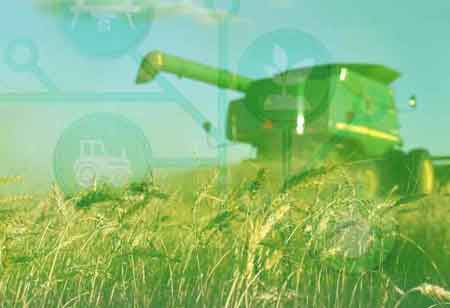Thank you for Subscribing to Agri Business Review Weekly Brief
Best Practices for Sustainable Seaweed Cultivation
Seaweed, a versatile and highly beneficial marine plant, is gaining recognition for its numerous applications

By
Agri Business Review | Monday, July 01, 2024
Stay ahead of the industry with exclusive feature stories on the top companies, expert insights and the latest news delivered straight to your inbox. Subscribe today.
Seaweed farmers can contribute to a sustainable future while reaping the rewards of this versatile marine resource.
FREMONT, CA: Seaweed, a versatile and highly beneficial marine plant, is gaining recognition for its numerous applications in food, agriculture, cosmetics, biofuel, and environmental management. As demand for seaweed products grows, adopting best practices for sustainable seaweed cultivation is crucial to ensure ecological health, economic viability, and social responsibility. Choosing the right location is critical for successful seaweed farming. Clean, nutrient-rich water is essential for healthy seaweed growth. Avoid areas with pollution or high levels of contaminants. Moderate water movement is beneficial as it helps nutrient uptake and prevents sediment accumulation on the seaweed.
Powerful currents can damage the plants. Seaweed needs adequate light for photosynthesis. Select sites with suitable depths where sunlight can penetrate sufficiently. Ensure the site selection does not disrupt local marine ecosystems or displace native species. Employing environmentally friendly farming methods is essential for sustainable seaweed cultivation. Use native species to prevent ecological imbalance. Collect seeds from wild populations sustainably, ensuring minimal impact on the natural ecosystem. Utilize techniques like long-line, raft, or net systems that allow for efficient growth and easy harvesting. These methods minimize habitat disruption and can be scaled to various sizes.
Maintaining the marine environment's health is crucial for seaweed farming's long-term success. Regularly monitor water quality, seaweed health, and environmental impacts. Implement adaptive management practices to respond to any negative changes. Properly manage any waste products from the farming process to prevent pollution. It includes biological waste, like dead seaweed, and materials, like ropes or nets. Develop strategies to mitigate the effects of climate change, such as rising sea temperatures and ocean acidification, which can affect seaweed growth. Sustainable seaweed farming offers significant benefits, from environmental conservation to economic growth and social development.
Ensuring the economic sustainability of seaweed farming involves. Understand market demand and trends to align production with consumer needs. Diversify product lines to include food, feed, biofuels, and pharmaceuticals. Invest in processing technologies to produce high-value products such as extracts, powders, and bioactive compounds. It can significantly increase profitability. Develop robust financial plans, including investment in infrastructure, labor, and marketing. Explore funding opportunities, such as grants and loans, to support initial setup and expansion. Engaging with and supporting local communities is essential for the social sustainability of seaweed farming.
Involve local communities in the farming process, providing employment and training opportunities. It fosters local support and ensures the transfer of knowledge and skills. Ensure fair wages, safe working conditions, and equitable treatment of all workers involved in seaweed farming. Educate the public and stakeholders about the benefits of sustainable seaweed farming and its role in environmental conservation and economic development. Continuous research and innovation are vital for advancing seaweed farming practices. Collaborate with research institutions, universities, and other farms to share knowledge, resources, and advancements in seaweed cultivation techniques.





